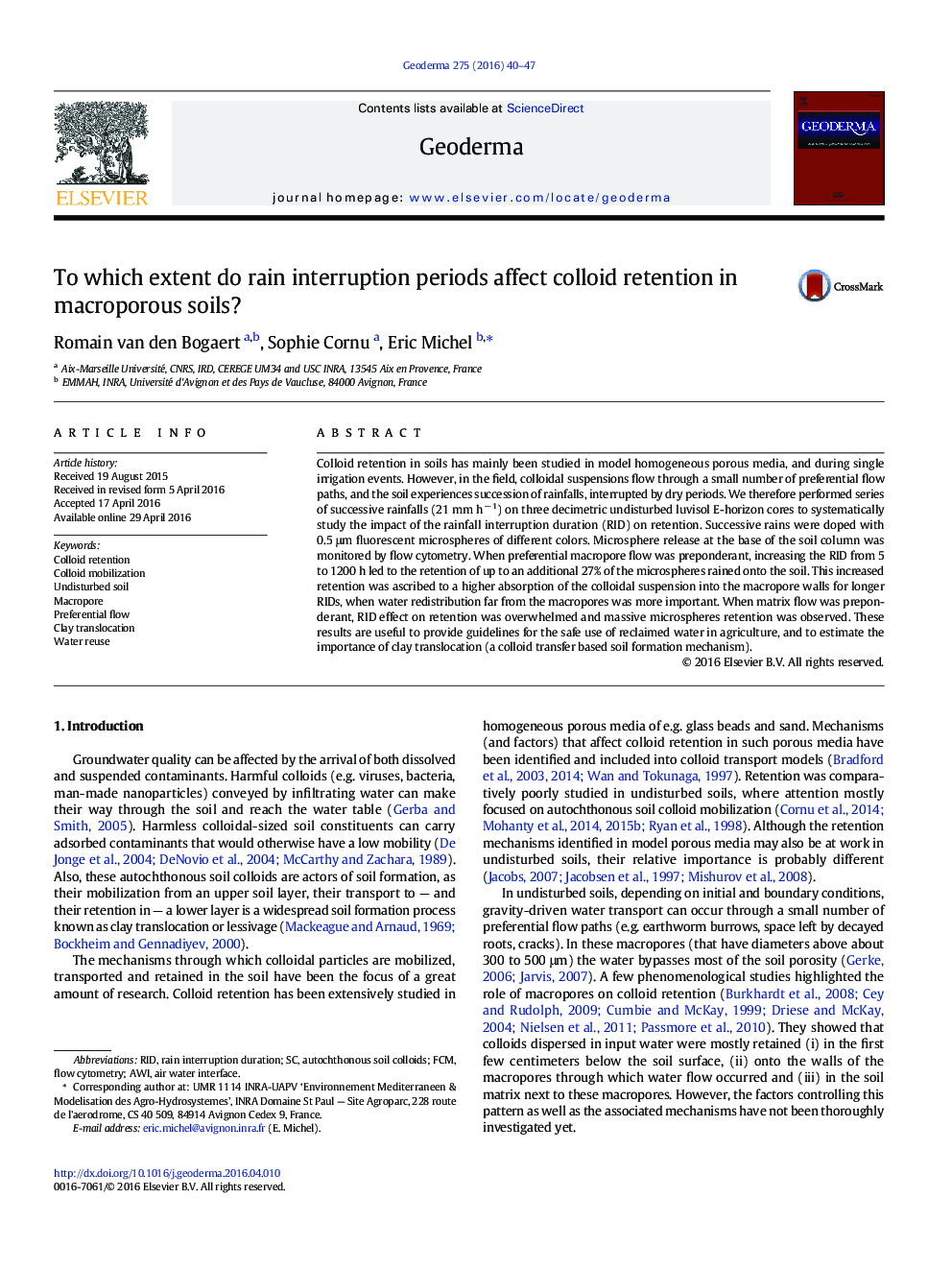| Article ID | Journal | Published Year | Pages | File Type |
|---|---|---|---|---|
| 4572900 | Geoderma | 2016 | 8 Pages |
•Rain Interruption (RI) periods affect colloid retention when rain resumes.•There is up to 27% more colloid retention when the RI increases from 5 to 1200 h.•Effect of RI is apparent when macropore flow dominates the hydraulic behavior.•When matrix flow is preponderant, RI effect is overwhelmed and retention is massive.•These results help to provide guidelines for a safer use of wastewater in agriculture.
Colloid retention in soils has mainly been studied in model homogeneous porous media, and during single irrigation events. However, in the field, colloidal suspensions flow through a small number of preferential flow paths, and the soil experiences succession of rainfalls, interrupted by dry periods. We therefore performed series of successive rainfalls (21 mm h− 1) on three decimetric undisturbed luvisol E-horizon cores to systematically study the impact of the rainfall interruption duration (RID) on retention. Successive rains were doped with 0.5 μm fluorescent microspheres of different colors. Microsphere release at the base of the soil column was monitored by flow cytometry. When preferential macropore flow was preponderant, increasing the RID from 5 to 1200 h led to the retention of up to an additional 27% of the microspheres rained onto the soil. This increased retention was ascribed to a higher absorption of the colloidal suspension into the macropore walls for longer RIDs, when water redistribution far from the macropores was more important. When matrix flow was preponderant, RID effect on retention was overwhelmed and massive microspheres retention was observed. These results are useful to provide guidelines for the safe use of reclaimed water in agriculture, and to estimate the importance of clay translocation (a colloid transfer based soil formation mechanism).
Graphical abstractFigure optionsDownload full-size imageDownload as PowerPoint slide
